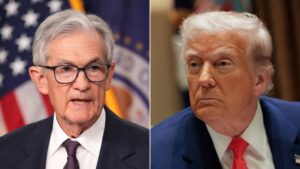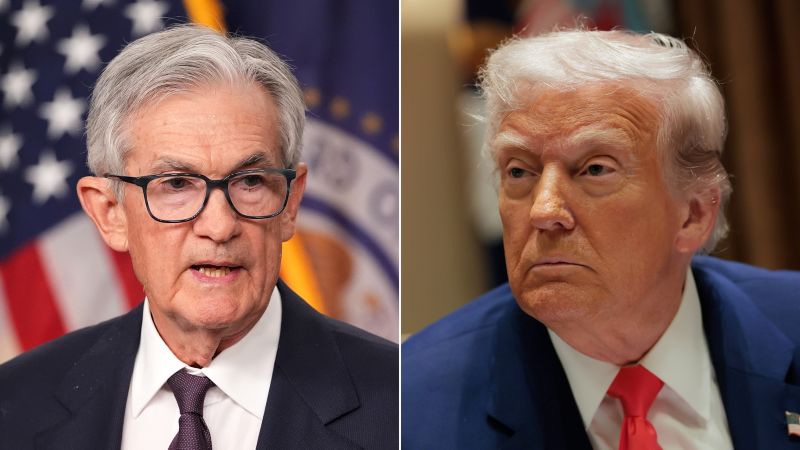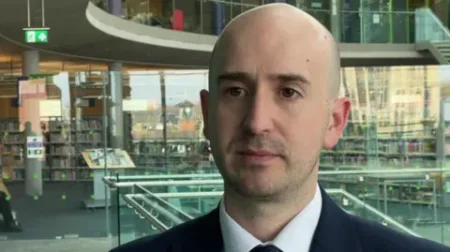President Donald Trump has ramped up his criticism of Federal Reserve Chair Jerome Powell and the central banking system amid an ongoing push for interest rate reductions. In a series of posts on his social media platform, Trump expressed his discontent with the Federal Reserve’s Board of Governors, accusing them of allowing conditions to deteriorate for the United States economy. His statements reflect a broader strategy advocating for ultra-low interest rates, a maneuver he believes will benefit both the federal government and American consumers.
In one of his posts, Trump indignantly remarked that the Fed’s board “should be ashamed of themselves” for their actions. Importantly, the Federal Reserve operates with a board that is not solely responsible for policy changes; it also includes five regional Fed bank presidents with voting powers. This raises ambiguity over whom exactly Trump intended to criticize, as it involves not just the board members, but a wider range of officials influencing monetary policy.
Doubling down on his claims, Trump shared a graphic depicting various central banks globally, highlighting their key interest rates. His accompanying annotations chastised Powell directly, alleging that the Fed chair has “cost the USA a fortune” and that this detrimental trend continues unabated. Trump’s engagement with the Federal Reserve has been depicted vividly through his informal communication style, with a visual that included personal notes emphasizing his dissatisfaction.
During a press conference, White House Press Secretary Karoline Leavitt revealed that Trump had communicated this chart to the Fed, indicating that he expects accountability from the Board. “The Board just sits there and watches; they are equally to blame. We should be paying 1% Interest, or better!” he asserted on his platform, further expressing his singular focus on lowering interest rates to stimulate economic growth.
This prolonged animosity towards Powell is particularly notable given that Trump himself appointed him in 2018. Over recent months, the former president has not held back in his critiques, labeling Powell as a “fool,” a “numbskull,” and a “stupid person.” Trump’s main grievance appears to be centered around the Fed not accommodating his preferences for lower borrowing costs—a priority he feels would significantly alleviate the federal government’s burden of interest rate payments on its debt.
Leavitt echoed Trump’s sentiment about the need for lower rates, pointing out that the American public desires access to affordable borrowing. She stated, “American people want to borrow money cheaply, and they should be able to do that, but unfortunately, we have interest rates that are still too high.” This reflects a broader concern shared by the Trump administration about consumer access to credit and the impediments posed by elevated interest rates.
In contrast, while some central banks like the European Central Bank and the Bank of Mexico have opted to lower their benchmark lending rates in the current fiscal year, the Federal Reserve has maintained its rates. This divergence stems from significant policy changes that have taken place since Trump’s term began, with Fed officials emphasizing a cautious approach. They have indicated the necessity of evaluating the economic repercussions of prior decisions before contemplating any further changes to interest rates.
In a notable display of professionalism, Powell has refrained from directly responding to Trump’s repeated criticisms. Instead, he maintains that the Federal Reserve’s primary mandate is to control inflation and ensure the labor market remains robust. He has consistently affirmed that the central bank operates independently from political pressures, focusing strictly on economic indicators rather than government financial situations. During a Senate hearing held on June 24, Powell reiterated, “we don’t take into consideration political factors” when determining policy adjustments.
As developments unfold, both sides of this ongoing dialogue indicate significant concerns about fiscal policy, economic health, and the relationship between governmental authorities and central banking institutions.
This matter will continue to evolve, and updates will be provided as further information becomes available.











